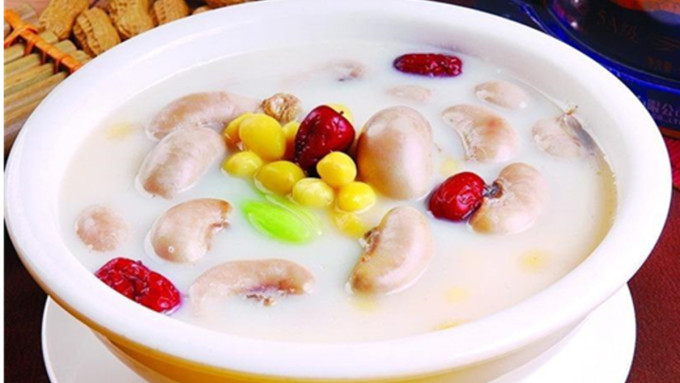Qingcheng Mountain Cultural Heritage
Mount Qingcheng is one of the cradles of Taoism in China. Front Mountain has many historical and cultural sites, while Back Mountain is famous for its tranquil and stunning scenery, pure fresh air and noise-free environment.

The famous Taoist mountain – Qingcheng Mountain
Qingcheng Mountain
Why is it called ‘Qingcheng Mountain’? One theory is that the mountain is so wooded that it looks like a green citadel, hence the name ‘Qingcheng Mountain’. Another theory is that it was originally called “Qingcheng Mountain”, which has three dots of water on its side. This is because the ancients believed that “Qingdu and Ziwei were the places where the emperor lived”, that is, where the gods lived, hence the name “Qingcheng Mountain”. During the Tang Dynasty, there was a dispute between Buddhists and Taoists over the land on Qingcheng Mountain, so Emperor Xuanzong of Tang issued an edict that “the temple should be returned to the Taoists and the temple should be built outside the mountain”. In the edict, the word ‘Qing’ was written as ‘Qing’ without the waterside, and the name ‘Qingcheng Mountain’ was changed to ‘Qingcheng Mountain’. The name “Qingcheng Mountain” was changed to “Qingcheng Mountain”.
Risks
Climate change poses a threat to the biodiversity of the Qingcheng Mountains. As the climate warms, some species may face pressure to survive, leading to population decline or extinction. In addition, climate change may lead to the spread of invasive species, negatively impacting local ecosystems.
Measures
Establishment of a nature reserve: The Qingcheng Mountain Nature Reserve was established in 1982 to protect the ecological environment, wildlife resources and natural landscape of Qingcheng Mountain. Destruction of natural resources and restriction of human activities are prohibited in the reserve to maintain the ecological balance.
Heritage Conservation: Mount Qingcheng is home to numerous historic Taoist temples and monuments. The government protects and restores these cultural relics to ensure their intact preservation. At the same time, publicity and enforcement of heritage protection laws and regulations are strengthened to raise public awareness of heritage protection.
Ecotourism planning: The government has developed a tourism development plan for Mount Qingcheng, which aims to achieve a harmonious development of tourism and ecological conservation. The impact of tourism on the ecological environment of Mount Qingcheng is mitigated by limiting the number of tourists, regulating their behaviour and developing green tourism.
Environmental protection and treatment: Strengthen environmental protection and treatment work in the Qingcheng Mountain area, including pollution control, waste treatment and soil and water conservation, in order to improve the quality of the ecological environment. At the same time, vegetation restoration work will be enhanced to improve the resilience of Mount Qingcheng.
(Trekking Beyond)
In the early days, most of the Taoists lived in caves or in huts next to caves. In the Jin Dynasty, Qingcheng Mountain began to build palaces and temples, including the Gu Chang Daoist Temple, the Ancestral Hall, the Shangqing Palace, the Laojun Pavilion, the Jianfu Palace, the Yuanming Palace and the Yuqing Palace. The Gu Chang Taoist Temple is also known as the Heavenly Master’s Cave, where Zhang Ling “set up his mao and preached”. There is also the Yellow Emperor Ancestral Hall and the Hall of the Three Emperors, where the Fuxi, Shennong and Yellow Emperors are worshipped. At the back of the temple is a cave at the top of the mixed elements, where Zhang Ling is said to have practised and eventually became an immortal, and was named Zhang Tian Shi. As a result, Mount Qingcheng became the birthplace of Chinese Taoism and the ancestral mountain ancestral temple of the Tianshidao.
The Four Wonders of Qingcheng Mountain
In the Tang Dynasty, the “Dongtian Tribute Tea” was one of the seven major tea-producing regions in China. In Song Dynasty, Qingcheng’s “purple-backed dragon bud” and “white-backed dragon bud” were listed as tribute. The tea is of excellent quality, with clear juice, fragrant and mellow; the second best “white fruit chicken stew” is a traditional dish from the Qingcheng Mountain area of Chengdu, with a thick white soup and exceptionally tasty chicken; the third best “Qingcheng kimchi” is commonly known as Qingcheng Daoist old kimchi. It is made from fresh cucumber, cowpea, red pepper, radish, garlic, cabbage, ginger and ginger produced by the Taoists in Qingcheng Mountain, and put into a special sauce made from mountain spring water, refined salt and pepper. The juice is extracted from the fruit and then brewed with mashed juice, iced sugar and a little curd wine. The taste of the wine is strong but not strong, sweet but not greasy.

(Zhang)
Qingcheng Mountain Spring Tea
(Little Card back to the countryside)
Qingcheng tea” is characterised by small and tender leaves, the buds of which are like “yuan out of flowers”, of excellent quality, and were classified as “tribute” for feudal dynasties to hold ceremonies and for rulers to enjoy, and were therefore called “Qingcheng Tribute Tea”. Peng Jian in the “irrigation record of the first draft” on the “Qingcheng tribute tea” made a detailed description: “since (Qing) Tang Xi 13 years Chief Secretary diatribe county belong to Qingcheng Mountain thirty-five anonymous monks, meal picking bud tea 800 jins, the inner building extremely beautiful tribute tea 60 jins, accompanying tea 60 jins, official tea six hundred and eighty jins “.
Proudly powered by WordPress